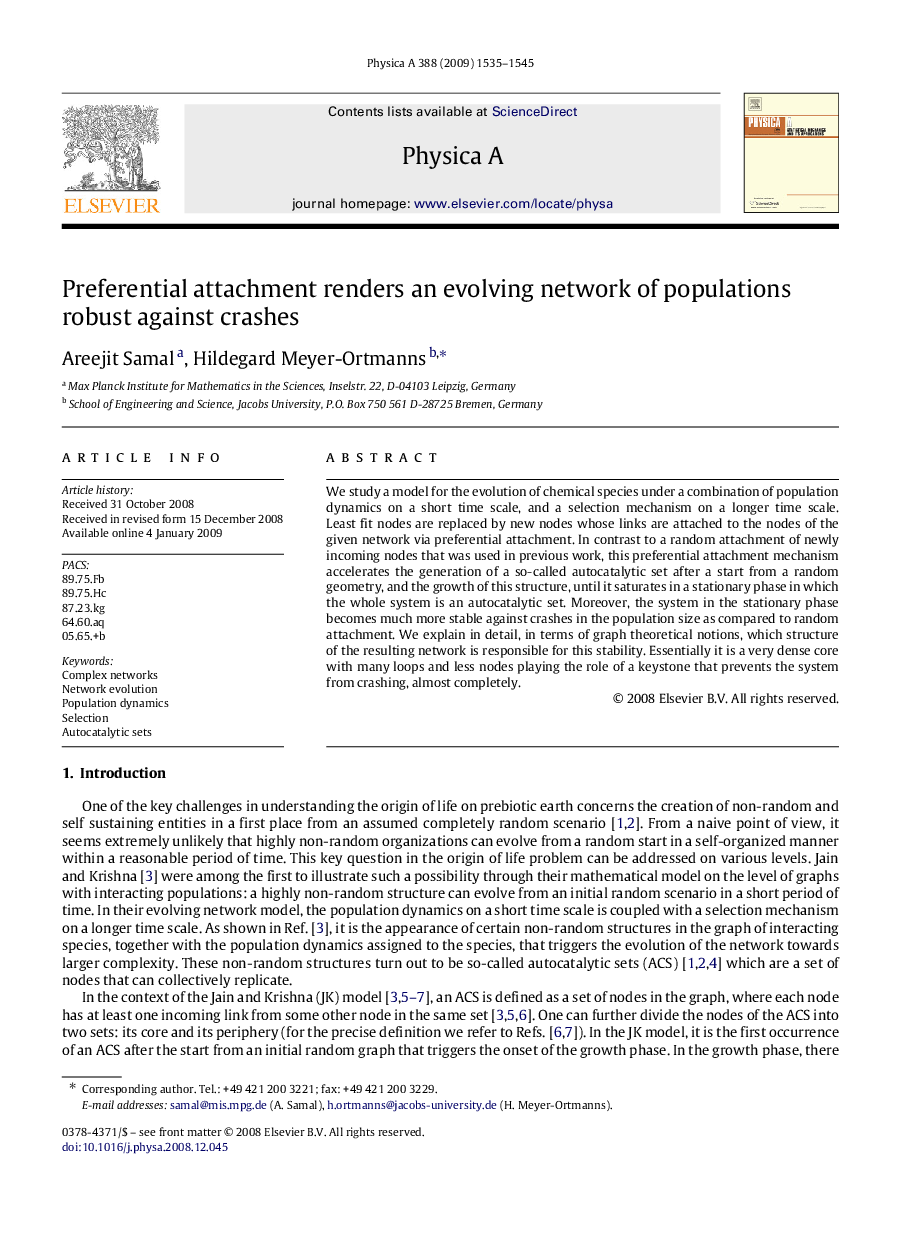| Article ID | Journal | Published Year | Pages | File Type |
|---|---|---|---|---|
| 974706 | Physica A: Statistical Mechanics and its Applications | 2009 | 11 Pages |
Abstract
We study a model for the evolution of chemical species under a combination of population dynamics on a short time scale, and a selection mechanism on a longer time scale. Least fit nodes are replaced by new nodes whose links are attached to the nodes of the given network via preferential attachment. In contrast to a random attachment of newly incoming nodes that was used in previous work, this preferential attachment mechanism accelerates the generation of a so-called autocatalytic set after a start from a random geometry, and the growth of this structure, until it saturates in a stationary phase in which the whole system is an autocatalytic set. Moreover, the system in the stationary phase becomes much more stable against crashes in the population size as compared to random attachment. We explain in detail, in terms of graph theoretical notions, which structure of the resulting network is responsible for this stability. Essentially it is a very dense core with many loops and less nodes playing the role of a keystone that prevents the system from crashing, almost completely.
Keywords
Related Topics
Physical Sciences and Engineering
Mathematics
Mathematical Physics
Authors
Areejit Samal, Hildegard Meyer-Ortmanns,
